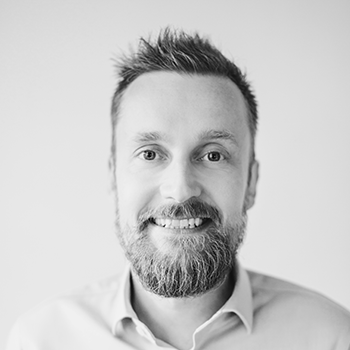
Company
Comprehensive property asset management and service capacity planning based on demand.
Our story
Our company saw the light of day in 2019. However, this was not the starting point for our story but rather the culmination of many different paths that ultimately led to the establishment of Locia Solutions. The first of these paths dates back to fifteen years from now when a young architect found her calling in urban planning and became involved with development work related to future land use scenarios in municipalities. Another path involved academic research focusing of anticipatory and data-driven urban planning processes for urban well-being. The third path was one with a public sector employee who was motivated of solving the challenges related to anticipatory planning of public services and facilities. The fourth path is that of an entrepreneur who asked the question “can we create better planning tools?”
In other words, the cornerstone of our company has been to first learn to ask how to understand complex urban challenges and to determine which problems we should aim to solve in the first place. The second step originates from learning through practical experience: asking why we do not have better solutions for the identified challenges. And the third step is: how can we develop effective solutions for those problems verified by real-life needs? Quoting the famous philosopher Martin Heidegger, setting your foot on the path is key even if you hit your toes on rocks once in a while. The significance of those sharing the path with you certainly is high, as you always must walk uphill to get to the top. Experimenting with something new is a long-term process that involves taking a great risk, especially for a small company. Finding the right partners can sometimes require straying from the path momentarily, but we have also encountered some major strokes of luck.
By combining science, creativity and practical knowledge with a Finnish engineering mindset and the latest technology, we support a “can-do” attitude that never bows down to dusty old approaches. This has enabled us to develop urban design processes that are wiser both on paper and in practice.
Our competence takes a concrete shape in the CapaCityTM tool that enables cities to manage and plan their service and facility networks in an anticipatory manner themselves, without heavy dependency on outside expertise.
Even if we take the risk being a bit ahead of our times, we favor new and innovative ways of collaboration for companies, the public sector and citizens to benefit from digital development. It`s time to solve the societal challenge worth millions of euros, which is manifested in temporarily facilities, underused spaces or growing renovation debt – in other words, loss of resources. This challenge must be solved to enable cities to renew their activities and maintain basic service tasks. Supported by digitalization and real-time data, cities are able to make evidence-informed decisions and optimize their service networks from the perspective of well-being promotion and SDGs. Urban planning processes play a key role in accomplishing these targets, which is why it is essential to ensure that they are well-functioning and effective.
Our 5 key theses:
KNOWLEDGE BASIS: Decision-makers must have access to an up-to-date overall status in a visual format that informs them e.g. on service capacity and condition rates of public buildings.
ANTICIPATION: Cities need anticipatory capabilities and tools for assessing their strategic choices and impacts of plans in order to understand where and how they should organize and produce services now and in the future.
CAPABILITIES: To enable anticipatory services planning and management based on data, cities must ensure that processes, solutions and the organization operations are in line. Once this has been achieved, the “city machinery” can produce the required output – plots, buildings and services for citizens – within the planned schedule, quality requirements and costs.
CONTINUAL IMPROVEMENT: Capabilities must be gradually developed to enable the above steps and ensure that planners and decision-makers can utilize urban data and key performance indicators in understanding changes in the operating environment.
MOVING BEYOND SILOS towards continuous dialogue and network-like collaboration that is promoted by a shared knowledge environment.

Contact us:

Emilia Rönkkö
Architect, D.Sc. (Tech.),
Docent in Urban Planning
+358 44 976 3620
emilia@locia.fi

Pekka Pirttiaho
Customer relations
+358 40 565 6850
pekka@locia.fi
